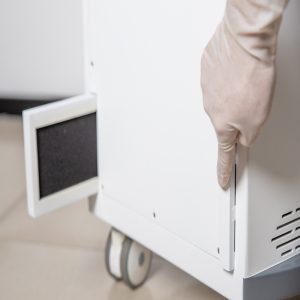Why Disinfection of the Internal Circulation of the Ventilator is Crucial for Patient Safety

Introduction:
Ventilators play a critical role in assisting patients with breathing difficulties, especially those with respiratory illnesses. However, recent studies have highlighted the potential risks associated with contaminated ventilators. Hospital-acquired infections, particularly pneumonia, are a serious concern, emphasizing the need for proper disinfection of the internal circulation of these life-saving machines.
The Risks of Contaminated Ventilators:
A contaminated ventilator can become a breeding ground for harmful microorganisms, including bacteria, viruses, and fungi. These pathogens can form biofilms within the internal components, making them resistant to traditional disinfection methods. When patients are exposed to these contaminated devices, they can develop serious healthcare-associated infections, compromising their recovery process.
Strategies for Effective Disinfection:
1. Regular Cleaning and Disinfection:
Healthcare facilities must establish strict protocols for the regular cleaning and disinfection of ventilators. This includes thoroughly wiping down external surfaces, removing and cleaning reusable parts, and using appropriate disinfectants approved for medical equipment. Following the manufacturer's guidelines ensures that the cleaning process is effective and safe.
2. Targeting Internal Circulation:
While external cleaning is essential, it is equally important to focus on the internal circulation of the ventilator. This includes the air pathways, humidifying chamber, and filters. Regular inspection and cleaning of these components can significantly reduce the risk of contamination.
3. Utilizing Advanced Disinfection Techniques:
Considering the challenges associated with eliminating biofilms, hospitals should explore advanced disinfection techniques. For instance, the use of ultraviolet germicidal irradiation (UVGI) or hydrogen peroxide vapor systems can effectively kill microorganisms within the internal circulation without causing damage to the equipment.
4. Sterile Disposable Components:
Using sterile disposable components, such as filters and breathing circuits, can minimize the risk of contamination significantly. These disposable elements should be regularly replaced, following manufacturer recommendations.
5. Staff Education and Training:
Healthcare professionals involved in the care of ventilator-dependent patients should receive comprehensive education and training on proper cleaning and disinfecting procedures. Ensuring they have a clear understanding of the importance of disinfection and the techniques involved will help maintain a safe environment for patients.
Conclusion:
Disinfection of the internal circulation of ventilators is vital for patient safety. By implementing rigorous cleaning protocols, targeting both external and internal components, and utilizing advanced disinfection techniques, healthcare facilities can reduce the risk of healthcare-associated infections. Prioritizing staff education and the use of sterile disposable components further enhances patient care. By taking these measures, hospitals can ensure the effectiveness of ventilators while maintaining a safe environment for patients.